Many thanks to James Swift for peering into this alternate timeline!
When it comes to home console gaming, there’s no greater “what might have been” story than the Sega Dreamcast. Despite only being around for two and a half years, the system remains one of the most beloved of all-time, having given us scores upon scores of classic games. Of course, fate just wasn’t on Sega’s side. The high toll of failures past and the looming shadow of the PS2 eventually forced Sega out of the hardware market altogether.
Even now hardcore gamers wonder what amazing games awaited us had the Dreamcast chugged along for a couple more years. Streets of Rage 4? A three-dimensional take on Gunstar Heroes? A mascot brawler a’la Super Smash Bros. featuring Sonic, Ryo Hazuki and those pips from Jet Grind Radio?

For a moment, let’s play armchair CEOs. We all know what fateful decisions Sega chose (and didn’t choose) en route to the 128-bit system’s demise, but with the gift of hindsight, are there any major changes Sega could have made to reverse the Dreamcast’s sour luck and turn it into a financially sustainable platform?
Below, we’ll take a look at five things Sega could have done differently with the Dreamcast, things that may have kept the company in the hardware business for at least one additional console generation.
The Dreamcast Launches with a DVD Player
The biggest system seller for the PlayStation 2 when it launched in 2000 wasn’t SSX or Madden or (ugh) Fantavision. It was the system’s built-in DVD player, which made it the most economical home device of the like on the market. The inclusion of a DVD drive in the Dreamcast would’ve increased production prices on the console (perhaps by as much as $200), which means Sega would’ve taken an even greater upfront loss on each Dreamcast unit purchased.
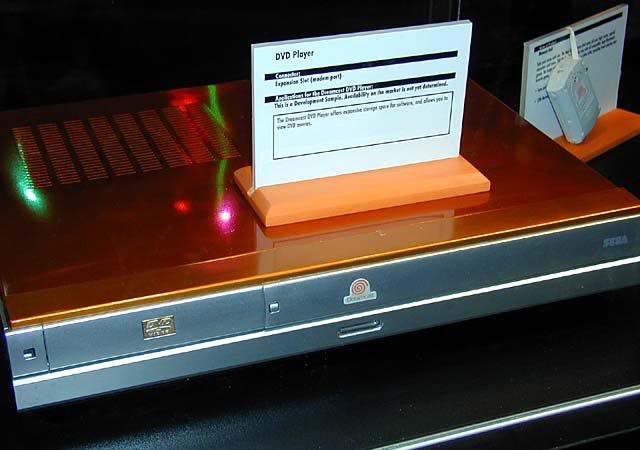
Still, one can’t help but wonder if the Dreamcast – even if priced up at $299 to cover the DVD player costs – launching a full-year ahead of the PS2 with a DVD drive included would have helped Sega cover a lot of eventually lost ground in the 2000 holiday season. Can you imagine the Dreamcast launching on Sept. 9, 1999 with a DVD of The Matrix as its pack-in killer app, alongside great console exclusives like Sonic Adventure, NFL 2K and Soul Calibur? The head start would have helped Sega accumulate a broader consumer base, and by utilizing DVD-ROMs for all Dreamcast media, Sega could have avoided the piracy problem that plagued its proprietary GD-ROM technology.
The Dreamcast Lands Grand Theft Auto III as a Console Exclusive
By fall 2001, the Dreamcast was all but done for. Despite sinking a lot of money into developing and promoting all-time classics like Shenmue, Jet Grind Radio and Sonic Adventure 2, nothing Sega put out on the market came anywhere close to becoming mainstream, cultural phenomena. But what if Sega held the exclusive console rights to an obscure sequel in a hyper-controversial, cult franchise?
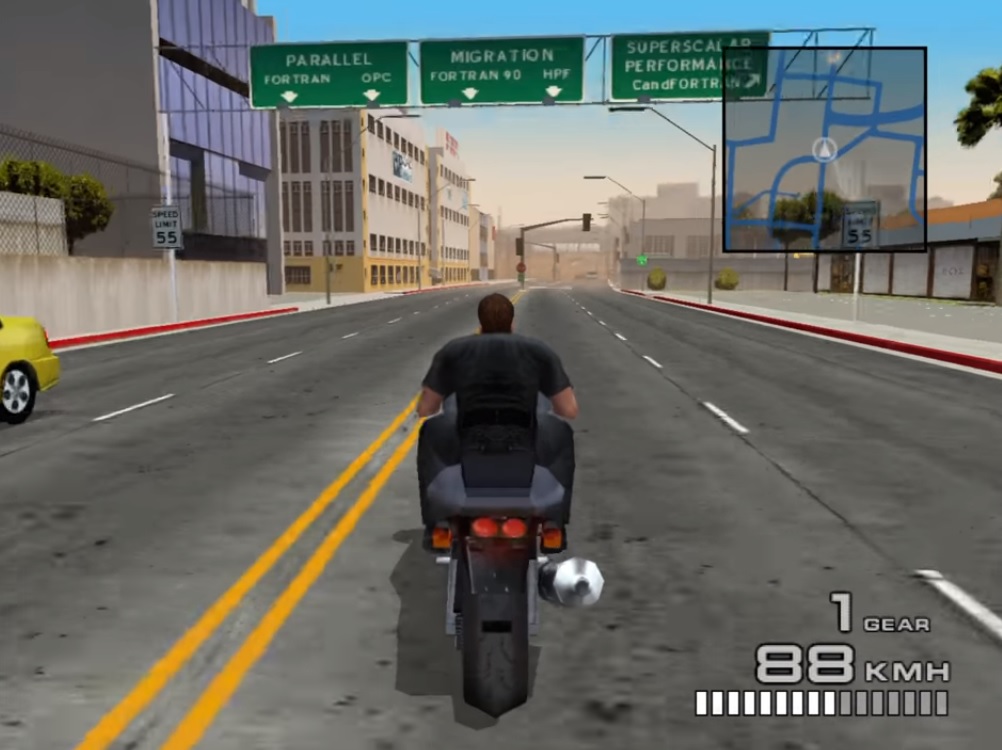
Somewhere, there’s a world where the Dreamcast – not the PS2 – became the birthplace for Grand Theft Auto III, the open-world sandbox pioneer that more or less defined video gaming in the Aughts. I can imagine word of mouth spreading fast about “this awesome game where you run around stealing cars and beating people up with tire irons.” Suddenly, GTA III is the Dreamcast’s out of nowhere savior. System sales would unexpectedly soar over the holiday season, with scores of teens and college kids picking up Dreamcasts just to play Rockstar’s degenerate magnum opus. In turn, that would’ve led to Sega signing up Rockstar as their star third party developer, garnering the exclusive rights to games like Max Payne, State of Emergency, Manhunt and the inevitable GTA III sequel (which, considering the architecture of the Dreamcast, almost certainly would’ve been a different game than Vice City.) Regardless, the success of GTA III, at minimum, would’ve kept the Dreamcast in the fight for one more Christmas rush.
Sega Partners with Microsoft For a Dreamcast/Xbox Hybrid
Rumors abound to this day that the original Xbox was initially designed to be backwards compatible with the Dreamcast, with some suggesting the humongous “Duke” controllers were meant to hold VMUs. While technically competitors, Sega and Microsoft had a pretty tight knit friendship from the get-go, which raises an interesting notion. What if instead of developing the Xbox as a standalone console, Sega and Microsoft had joined forces to co-develop the Dreamcast?
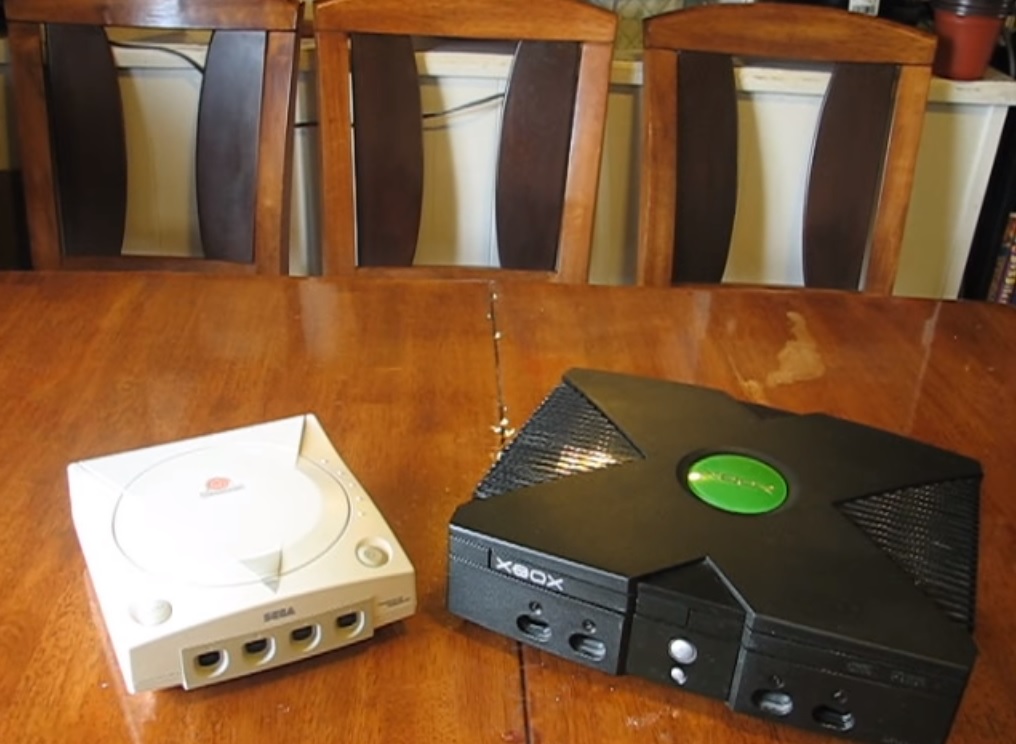
It’s a wild idea, but not outside the realm of possibility. At the time, Microsoft was looking for any opening into the hardware market that they could find. By supplying the Dreamcast’s internal components, we could have ended up with an insanely powerful DC from day one, complete with Bill Gates’ billions of dollars bankrolling the machine. In this scenario, not only would’ve Sega beat Sony to the new hardware punch with a year’s worth of lead-in, they would have started with a console more powerful than the PS2 right out the gate. In turn, this would’ve incentivized big name publishers and developers – EA, Square, Capcom, etc. – to consider bringing their games to Sega-Soft’s sleek, new machine.
The Dreamcast Scores a Guitar Hero-like Killer App
When the Dreamcast launched, it relied heavily on MTV as a key promotional partner. But what if instead of just partnering with Viacom for a slew of commercials, Sega went all out with a full MTV partnership, complete with Viacom sponsored (and financed) software? With the MTV partnership, Sega could’ve struck deals with big label record companies. And with the ability to license all the big bands and singers of the day, what if Sega reached out to this struggling upstart developer named Harmonix for a game that allowed them to take full advantage of their newfound musical libraries?
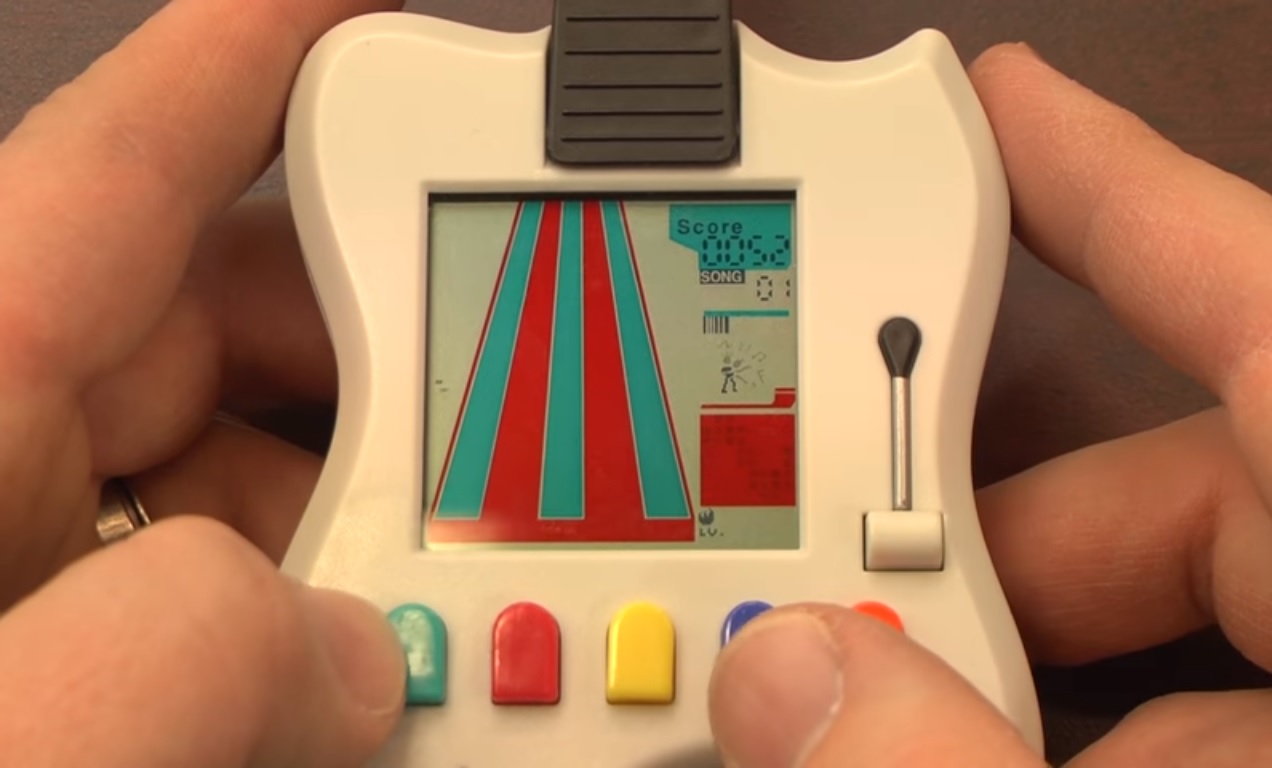
Technically, Guitar Hero is a game that could’ve worked on the Sega CD, so it definitely would’ve been workable using Dreamcast technology. While Shenmue would’ve been Sega’s hardcore system seller come Christmas 2000, its real breadwinner that holiday season would’ve been MTV ROCKS!, a $100 title that came with this weird but surprisingly sturdy plastic guitar peripheral and a disc glutted with popular tunes from groups like Limp Bizkit, Papa Roach and Korn. With little to no competition from Sony or Nintendo, MTV ROCKS! would’ve been far and away the best selling title of the Dec. 2000 shopping season, in turn creating a Pokemon- like cash cow for Sega.
Sega Targets Non-Traditional Gamers with Motion-Sensing Peripherals, Casual Titles
Perhaps the most tragic thing about the Dreamcast is that it failed not by being mediocre and formulaic, but by being extremely creative and delivering some of the greatest hardcore games of all-time. In hindsight, one can’t help but wonder if Sega would’ve managed to survive had they focused on creating more mainstream and casual titles instead of awesome (yet practically unmarketable) titles like Shenmue and Jet Grind Radio. With Seaman, Samba de Amigo and Sega Bass Fishing, Sega clearly had no problem ushering out wacky, wonky peripherals. But what if instead of rolling out plastic maracas and existential fish-man translators, they explored motion-sensing controllers similar to what Nintendo trotted out for the Wii? Again, the technology was there, and there’s no reason why the Dreamcast couldn’t have delivered the same experience Wii Sports ultimately granted consumers in 2006.
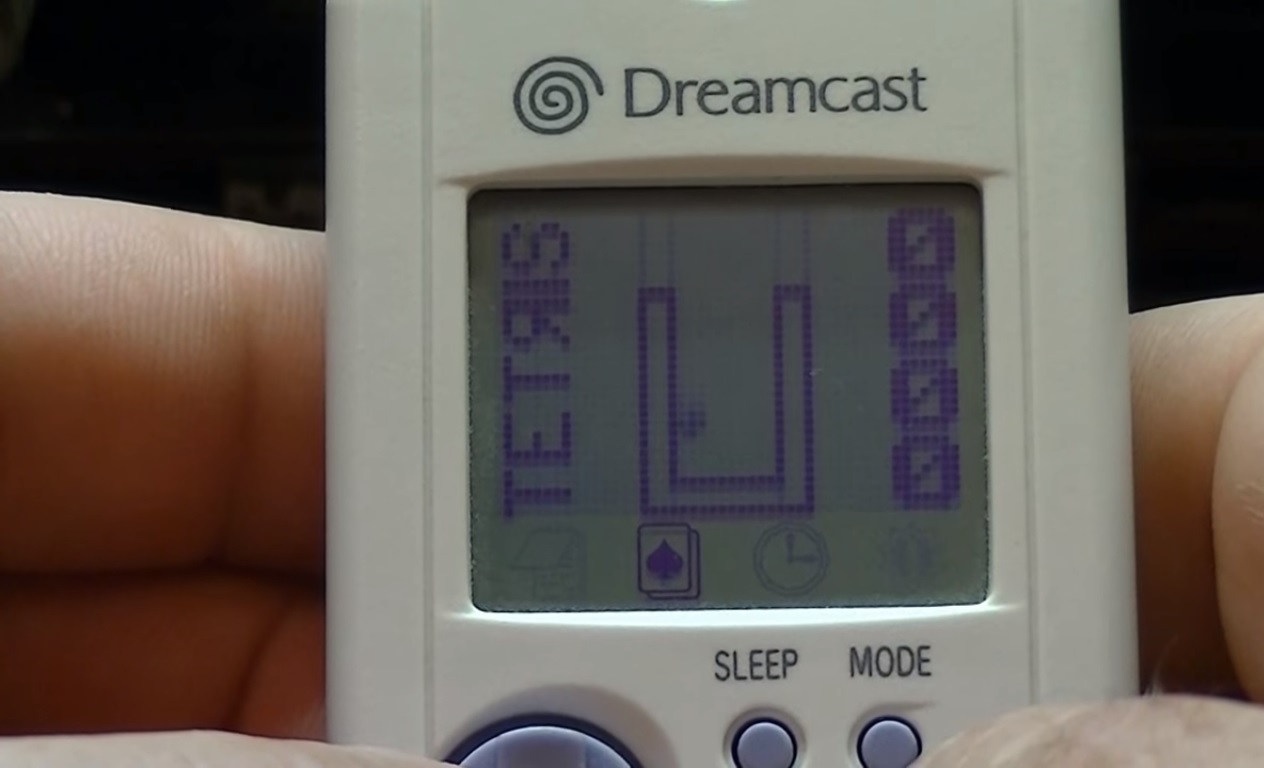
Along those same lines, what if Sega complemented niche titles like Skies of Arcadia and Phantasy Star Online by striking deals with up-and-coming micro-developers similar to Popcap Games to produce more widely accessible titles? By hitting home runs with both the hardcore Sega fan base and the emerging casual gamer market, Sega could have broadened its adoption base, and lined themselves up nicely for some even more lucrative partnerships in the future. Like, say, exclusive online distribution deals with developers like Zynga and maybe even third party applications like Netflix – way before Sony, MS and the Big N bought into digital downloads. Of course, there’s no guarantee that an emphasis on casual software and add-ons would’ve expanded the Dreamcast’s lifespan. But considering how the system ultimately performed in the marketplace, pursuing these forward-thinking ideas wouldn’t have made Sega’s pockets any emptier.


6 replies on “5 Ways the Dreamcast Could Have Survived”
If I were to rank the order of reasons why the DC failed, lacking a DVD player would absolutely be number one.
People were buying the ps2 for only the Dvd ability, with games being an afterthought.
The other ways you list weren’t really in Segas control, which isnt fair to criticise them for. And motion controls were way too early in the infancy for any company to see the vision in 98.
Another poor hardware decision was not including the console with a broadband adapter built in. There was a broadband add on only released in Japan but the should of been built right into the console like the 56k modem. Around 2000, many people were moving from dialup to broadband speeds and the DC could have been right there to support them.
Awesome stuff
Good thoughts.
I kind of like the Microsoft/Sega idea, but I think the Japan/U.S. cultural distance is too great for that partnership to have really worked. A big part of Sega’s problems in the Saturn era seem to have been a poor relationship between Sega of America and Sega of Japan. For Sega to have a partnership that worked, I think it would have to be Japanese, like the Hudson/NEC collaboration for the PC Engine. I doubt there’s a Japanese partner that could have saved the DC though (except Nintendo)…
Here’s a timeline for Sega that I’ve thought about: Sega is re-headquartered in the U.S. sometime in the early 90s. Remember that Sega started out as an American company, so it’s not as ridiculous as it sounds. The Genesis was a huge success in the West but a failure in Japan, so what if management/shareholders decided to refocus the company where its sales are?
They’d still keep some R&D, games development, etc. in Japan.
They’d have had a leg up on Sony and Nintendo in that era marketing to Westerners. It was probably inevitable that there would be a major console maker in the West, but it didn’t have to be Microsoft; it could have been Sega.
Now combine these ideas: Sega becomes an American company late in the Genesis era. Microsoft wants to enter the games business circa 2000. Now it makes a lot more sense for the two to partner.
This is such a good idea, I wish it would have happened. Sega of Japan is so darn stubborn…
As someone who owned a Dreamcast at the time, the frustrating thing was that Sega didn’t even try to compete. I feel like if Sega of America was still being run by the guys that were there during the Genesis years, they could have put up a fight.
1) Sega asked a loan of $1Bn to manufacture and aggressively launch the Dreamcast.
It didn’t have the money to include a DVD player within the console as early as 1998 and take the monetary loss for it.
2) If GTA III was launched exclusively for DC it wouldn’t have become as popular as it happened when launched on PS2.
Take 2 would anyway port the game on the far more popular PS2.
3) A joint console between Sega and Microsoft makes as much sense as the joint console between Nintendo and Sony that is very little.
Even if the two agreed on satisfying terms for both parties the big outsider (from the game console industry) corporation would have eaten alive the little game company.
4) Killer apps are hard to create but if Sega really could score a killer app that sell 20-30 million units on Dreamcast then the trajectory of the console would have be drastically changed for the best.
5) Wii could targeted the casual audience effectively because the motion controls were the default control method of the Wii.
Sega never showed any glimpse of standardize new control inputs with their consoles (at best they would include uncommon input peripherals with specific games that went nowhere as always happens with add ons) .
For Nintendo choosing the wiimote as default control input was more a natural choice (but still it was a bold move) because their history is full of innovations introduced in the controllers of their consoles as standard input (d-pad, shoulder buttons, analog stick, rumble pack, wireless controllers, touch screen etc.).